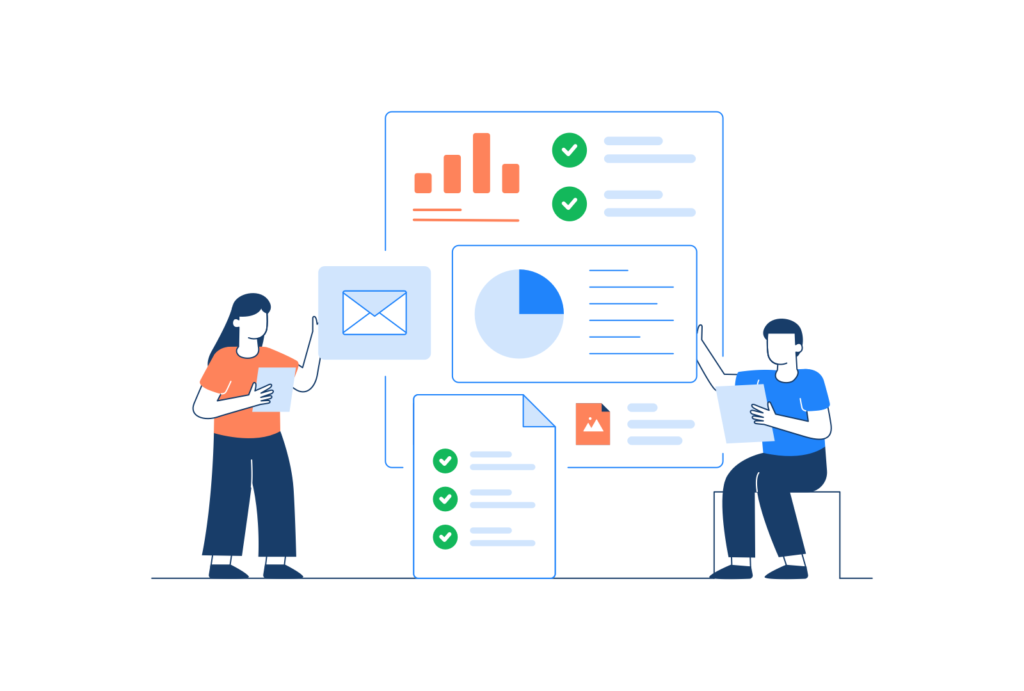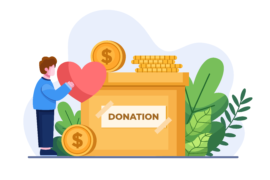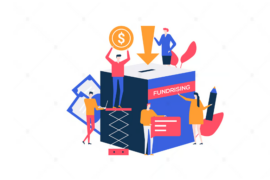In the ever-changing landscape of nonprofit organizations, the role of donor databases cannot be overstated. Donors play a pivotal role in driving impactful social change by supporting crucial initiatives with their generous contributions, yet managing these valuable relationships poses a complex challenge. This is where the true significance of donor databases comes to the fore.
Nonprofit organizations rely upon donor databases as the backbone supporting their vital operations, serving as a centralized hub housing and leveraging crucial information about supporters. Strategically utilizing donor databases empowers nonprofits to cultivate enduring bonds with generous donors, fueling sustainable growth and enabling their meaningful missions. Though the management of relationships presents obstacles, donor databases provide the solution by which nonprofits can navigate complexity and reinforce crucial connections, empowering continued change.
What Is a Donor Database?
At its core, a donor database is a sophisticated system designed to organize, store, and manage information related to an organization’s donors and supporters. It serves as a centralized repository that goes beyond merely tracking donations; it encompasses a comprehensive range of data including a donor’s entire history with an organization, their interests and preferences for engagement, and other pertinent details.
The success of a nonprofit hinges on effectively engaging its donor base. When donor information is thoughtfully organized within a single system, it empowers an in-depth understanding of each individual’s experiences and interactions over time. This illuminates a fuller picture, exposing the intricacies of a donor’s journey. With deep insight into supporters’ needs and values, an organization can tailor personalized communications, strategically focus engagement, and adeptly plan initiatives to nurture enduring relationships. A well-oiled donor database, capturing the richness of each contributor’s relationship, becomes the very foundation for long-term success.
Why Do Nonprofits Need a Donor Database?
In the ever-changing terrain of nonprofit work, the urgency for effective benefactor administration has never been more pressing. Without a suitable benefactor database systematized, nonprofits regularly encounter themselves struggling with a multiplicity of obstacles that can hinder their advancement and impact.
Challenges Nonprofits Face Without an Adequate Benefactor Database
Lack of Penetrating Statistics: With no centralized mechanism for benefactor specifics, nonprofits may battle to assemble and dissect critical facts regarding their benefactors. This insufficiency of perception produces it demanding to comprehend benefactor behavior, desires, and involvement levels.
Inefficient Interaction: Nonprofits may face troubles in keeping consistent and customized communication with their benefactors. This can lead to missed opportunities for participation, updates on institutional achievements, and appeals for backing.
Restricted Fundraising Efficacy: Fundraising attempts become less focused and productive without a thorough benefactor database. Nonprofits may find it challenging to recognize and prioritize high-value benefactors, resulting in sub-optimal fundraising outcomes.
Time-Devouring Administrative Undertakings: Manual handling of benefactor information, gift tracking, and reporting can be time-consuming and mistake-prone. This can divert important resources away from mission-critical activities.
Benefits of Utilizing Benefactor Databases for Fundraising and Benefactor Administration
Holistic View of Benefactors: Benefactor databases furnish nonprofits with a total and amalgamated view of each benefactor’s interactions with the organization. This comprehensive perspective allows for more personalized and meaningful participation.
Tactical Fundraising Campaigns: With benefactor databases, nonprofits can strategically plan and implement fundraising campaigns. By segmenting benefactors based on their giving history and preferences, organizations can customize campaigns to resonate with specific benefactor segments, maximizing effectiveness.
Improved Correspondence: Benefactor databases facilitate streamlined and targeted communication. Nonprofits can send personalized messages, updates, and appeals, fostering stronger connections with benefactors and enhancing overall communication effectiveness.
Productive Resource Distribution: By automating tasks such as gift tracking and reporting, nonprofits can allocate resources more productively. This allows staff to focus on building relationships, creating impactful programs, and advancing the organization’s mission.

Key Features of an Effective Donor Database
A robust donor database goes beyond simple information storage; it serves as a dynamic tool that strongly supports nonprofits in raising donor management and fundraising efforts to new levels. The potency of a donor database lies in its attributes, which are thoughtfully engineered to meet the unique requirements of nonprofit tasks.
Crucial Attributes
Contact Organization:
-
Central repository for donor contact information.
-
Segmentation abilities for targeted correspondence.
Donation Documentation:
-
Complete documentation of donor contributions and charitable history.
-
Automation of donation procedures for precision and productivity.
Reporting and Quantitative Analysis:
-
Robust reporting instruments to dissect donor data and track fundraising output.
-
Customizable dashboards for real-time insights into organizational metrics.
How These Attributes Contribute to Nonprofit Accomplishment
Enhanced Relationship Development: Contact management attributes enable personalized interactions, nurturing stronger relationships with donors.
Data-Guided Decision Making: Donation tracking and reporting give nonprofits the power to make informed choices grounded in data and tendencies.
Improved Fundraising Efficiency: Automation of donation processes streamlines fundraising initiatives, allowing for more impactful campaigns.
Demonstrable Impact: Reporting and analytics attributes help nonprofits demonstrate the impact of donor contributions, enhancing transparency and trust.
Types of Donor Databases
In the diverse landscape of donor databases, nonprofit organizations have a variety of possibilities to select from. Each class possesses its own set of advantages and things to think about. Comprehending the nuances of these benefactor database solutions is crucial for nonprofits aiming to make informed judgments about their data administration approach.
Overview of the Different Donor Database Solutions:
Cloud-Based Donor Databases:
-
Introduction: Cloud-based remedies store data on distant servers accessed through the internet.
-
Pros:
-
Accessibility from any place with an internet connection.
-
Automatic updates and scalable storage choices.
-
-
Cons:
-
Possible security worries, although modern systems execute solid security measures. Additionally, reliance on an active internet connection could potentially cause access issues.
-
On-Premise Donor Databases:
-
Introduction: On-premise solutions involve playing host to data on nearby servers within the association.
-
Pros:
-
Straight control over information and security.
-
No reliance on outside web availability.
-
-
Cons:
-
Higher initial expenses for equipment and upkeep. Furthermore, accessibility is confined to the association’s premises.
-
Open-Source Donor Databases:
-
Introduction: Open-source answers give modifiable programming that can be adjusted and shaped to particular needs.
-
Pros:
-
Cost-effective with no permitting charges.
-
Community backing for continuous advancement.
-
-
Cons:
-
May require specialized ability for tweaking. In addition, restricted client help contrasted with business arrangements.
-
Comprehending the exceptional qualities of each sort permits nonprofits to adjust their decision with authoritative needs, spending plan obstacles, and specialized capacities. Additionally, considering an organization’s staff expertise and technical requirements is important when evaluating options.
Selecting the Right Donor Database for Your Nonprofit
Choosing the right donor database is a pivotal decision that can significantly impact the efficiency and effectiveness of a nonprofit organization. To navigate this process successfully, nonprofits must consider various factors and follow best practices in selecting the most suitable donor database for their unique needs and aims.
Considerations for Choosing a Donor Database:
Organization Complexity: Assess the intricacy of your organization, as more multifaceted nonprofits may require advanced attributes and scalability.
Financial Constraints: Weigh budgetary limitations and the upfront and continuing expenses related to different types of donor databases.
Technological Proficiency: Evaluate the technical acumen of your team to decide whether a more user-friendly or customizable solution is preferable.
Accessibility Requirements: Assess the need for remote usability, as this can sway the choice between cloud-based and on-location solutions.
Security and Guidelines: Prioritize the security of donor information and ensure that the chosen solution follows relevant data protection regulations.
Steps and Optimal Practices for Evaluation and Selection:
Conduct a Needs Evaluation: Identify the distinct needs and expectations of your organization, thinking about factors like donor volume, data complexity, and future growth.
Research and Compare Solutions: Explore available donor database solutions, considering their traits, user reviews, and reputation in the nonprofit sector.
Request Demos and Trials: Engage with vendors by requesting demonstrations and trials to experience the functionality firsthand and assess user-friendliness.
Evaluate Support and Training: Consider the level of customer assistance and accessible training resources to ensure a smooth implementation process.
Consider Scalability: Choose a donor database that can scale with your organization’s development and evolving needs over time.
Check Integration Capabilities: Ensure that the chosen database integrates seamlessly with other tools and software your organization uses.

Implementing a Donor Database System
The decision to embrace a benefactor database platform portended a pivotal juncture for a nonprofit. However, accomplishing deployment exceeded picking the proper software. It necessitated judicious planning, seamless data migration and thorough worker instruction to ensure fully exploiting fresh capabilities.
Guidance for Executing:
Fashion a Thoroughly Thought-out Blueprint: Detail a comprehensive execution program outlining schedules, benchmarks and responsibilities. Craft this outline through united stakeholders.
Information Analysis and Cleansing: Conduct an exhaustive examination of prevailing information. Normalize and standardize information to affirm correctness before migration. Identify and remedy any inconsistencies.
Opt for the Proper Migration Approach: Select an apt information migration approach, whether a solitary bulk transfer or staggered methodology. Guarantee chronicling history transfers accurately to sustain a full benefactor annals.
Worker Coaching and Integration: Furnish exhaustive preparation to personnel utilizing the benefactor database. Offer persistent backing and assets to facilitate a smooth transition.
Test the Framework: Before full execution, administer broad testing to pinpoint and tackle any issues. This involves functionality testing, information integrity checks, and user acceptance testing.
Recommendations for Ensuring a Streamlined Transition:
Correspond Frankly: Keep all stakeholders informed about the transition method. Communicate modifications, schedules, and anticipated outcomes candidly to control expectations.
Institute a Support System: Develop a support system for users during the transition. This can include designated support staff, FAQs, and documentation to address common issues.
Request Feedback: Solicit remarks from staff during implementation. Input can help spot unforeseen obstacles and refine processes.
Commemorate Benchmarks: Acknowledge and celebrate benchmarks achieved during implementation. This boosts morale and underscores transition positives.
Continuous Progress: After implementation, continue evaluating and refining processes based on user feedback and evolving organizational needs. A benefactor database should adapt to nonprofit landscape changes.
Data Security and Privacy
The safekeeping of benefactor intelligence is of utmost importance for charitable groupings. Sustaining benefactors’ self-assurance necessitates a staunch dedication to cybersecurity and privacy sheltering. Addressing these anxieties confirms that delicate information continues covert, and the association is compliant with applicable privacy statutes.
Addressing the Importance of Protecting Donor Information:
Dependability and Responsibility: Highlight how information security plays a pivotal role in constructing and upholding self-assurance with benefactors. Emphasize the fellowship’s commitment to being answerable for the protection of their intelligence.
Legal Adherence: Fully grasp and obey applicable statistics protection laws and regulations in Canada, like the Personal Information Protection and Electronic Documents Act.
Recommendations for Maintaining Cybersecurity and Guaranteeing Conformity with Privacy Regulations:
Encryption of Information: Implement encryption protocols to defend statistics during transmission and storage, bringing an extra layer of protection against unauthorized access.
Access Governance: Establish strict access governance to confirm that solely approved personnel have access to delicate benefactor intelligence. Regularly reappraise and update admittance allowances.
Regular Audits: Conduct standard security audits to discern susceptibilities and imperfections in the system. Address any issues promptly to maintain a protected environment.
Staff Training: Educate team on security most excellent practices and the importance of shielding benefactor intelligence. Foster a culture of cybersecurity mindfulness throughout the affiliation.
Secure Elimination of Information: Implement safe methods for statistics disposal when details is no longer needed, together with physical and digital ways to impede unauthorized access to discarded statistics.
Incident Response Plan: Develop and consistently update an incident response plan outlining the steps to be taken in the instance of a security breach, including communication strategies.
Maximizing Donor Engagement with a Database
The power of leveraging a donor database extends beyond surface level data storage—it can act as a dynamic instrument in cultivating meaningful alliances with advocates. Maximally engaging supporters involves strategic application of the database to enhance correspondence, tailor interactions, and ultimately intensify the bond linking the nonprofit to its donors.
Strategies for Strengthening Communication and Commitment:
Categorization for Targeted Messaging: Take advantage of the segmentation abilities of your donor database to classify benefactors dependent on their inclinations, charitable history, or participation level. This permits personalized and aimed communication.
Automated Email Campaigns: Utilize the automation attributes of the donor database to establish email initiatives triggered by explicit donor behaviors or milestones. This ensures well-timed and pertinent correspondence.
Event Tracking and Invitations: Use the database to monitor donor attendance and interests in past happenings. Dispatch individualized event invitations to benefactors dependent on their inclinations and previous participation.
Regular Updates and Impact Reports: Keep donors informed regarding the impact of their contributions. Use the database to generate consistent updates and impact reports, showcasing the tangible outcomes of their support.
Personalization Techniques to Strengthen Donor Relationships:
Customized Acknowledgments: Personalize acknowledgment messages for donations, expressing gratitude while highlighting the explicit impact of the donor’s contribution.
Personalized Campaign Appeals: Tailor fundraising appeals dependent on a donor’s history and interests. This personal touch increases the likelihood of donor engagement and support.
Birthday and Milestone Recognition: Use the donor database to track noteworthy dates, such as birthdays or the anniversary of the donor’s initial contribution. Send personalized messages to celebrate these milestones.
Preference Tracking: Allow benefactors to specify their communication preferences within the database. This ensures that they receive information in their preferred format and frequency.
Overcoming Challenges in Donor Database Management
While donor databases are invaluable tools for nonprofits, effectively utilizing these systems requires proactively addressing inherent obstacles. With strategic planning and pragmatic solutions, a nonprofit’s database can remain a dependable resource for supporting their mission.
Common Complications That Nonprofits Face When Managing Donor Information:
Input Errors Are Inevitable: Manual data entry leaves room for inaccuracies, risking miscommunication and hindering fundraising. Additionally, limited staff coaching on the database’s full abilities can undercut donor engagement. Integration challenges with other software also disrupt workflow. Furthermore, maintaining data security is an ongoing venture vulnerable to breaches of sensitive donor details.
Practical Preventatives And Tactics For Surmounting These Struggles:
Routine Data Audits For Quality Control: Conduct audits to pinpoint and remedy input mistakes through validation protocols. Prioritize comprehensive training initiatives to optimize the database’s use, with ongoing assistance accessible. Moreover, carefully coordinating integrations with vendors smooths information transfer, while regularly assessing security with encryption and access management protects constituents. Soliciting user input on usability pinpoints room for refinement.
Future Trends in Donor Databases
As technological advancements swiftly transform fundraising landscapes, nonprofit organizations must vigilantly monitor emerging trends to safeguard their innovative edge. Embracing these evolutions can elevate engagement while streamlining operations for augmented impact.
Emerging Techs and Tendencies to Consider:
AI Integration: The incorporation of artificial intelligence into donor databases is proliferating. AI algorithms can dissect behavior, forecast giving propensities, and customize recommendations for involvement.
Blockchain for Transparency: Blockchain technology gains momentum for its potential to boost transparency and trustworthiness. Nonprofits can apply blockchain to secure and substantiate donations, supplying benefactors visibility into usage of contributions.
Predictive Analytics for Fundraising: Predictive analytics tools evolve in sophistication, allowing nonprofits to anticipate preferences and actions. This information-driven method enhances effectiveness of fundraising strategies.
Enhanced Mobile Integration: With increasing reliance on mobile gadgets, donor databases incorporate seamless mobile integration. Mobile programs and optimized interfaces cater to benefactors who favor interaction through smartphones.
How Nonprofits Can Stay Ahead by Adopting Innovative Solutions:
Investing in Technology Partnerships: Collaborate with tech partners specialized in nonprofit solutions. This permits organizations to leverage cutting-edge technologies without extensive internal development burdens.
Continuous Training and Skilling: Prioritize consistent training and upskilling for staff to guarantee proficiency navigating and maximizing emerging technologies integrated into donor databases.
Adaptable Database Solutions: Opt for donor database solutions adaptable and easily integrating with emerging technologies. This flexibility ensures seamless incorporation of new features and functionalities.
Engaging with Tech Communities: Actively participate in tech communities and nonprofit forums to stay informed regarding latest trends. Networking with professionals and peers can provide valuable insights into innovative solutions.
Conclusion
In the continually evolving world of nonprofit work, the roles of donor databases are forever changing. As technology progresses and donor expectations adapt, nonprofits must maintain nimbleness and leadership in how they manage donor databases. By prioritizing and investing in these systems, organizations lay a robust groundwork for achievement, ensuring that their efforts towards positive change are bolstered by efficient and effective donor engagement strategies. As you embark on your journey, may your commitment to donor database excellence remain steadfast, propelling your organization toward broader impact and success.
Are you ready to revolutionize your nonprofit’s fundraising efforts? Look no further than Werbylo, a cutting-edge, free fundraising and contribution app designed exclusively for nonprofits in Canada. As you’ve explored the comprehensive guide on donor database management, it’s clear that the right tools can make a transformative influence on your organization’s achievement.
Unlock the Power of Werbylo for Your Nonprofit:
Effortless Fundraising: Werbylo simplifies the fundraising process, allowing your nonprofit to create campaigns and accept contributions effortlessly. Say goodbye to complex fundraising logistics and hello to a streamlined, user-friendly platform.
Intuitive Donor Database Integration: Werbylo seamlessly integrates with donor databases, enhancing your ability to manage, organize, and engage with your supporters effectively. Experience the synergy of a powerful fundraising app and a dynamic donor management system.
Cost-Free Solution: Werbylo is committed to supporting nonprofits in Canada without adding financial strain. Enjoy the benefits of a high-quality fundraising and contribution app without worrying about costs. It’s our way of empowering your mission-driven initiatives.
Innovative Features: Stay ahead of the curve with Werbylo’s innovative features, aligning with the future trends discussed in the comprehensive guide. Leverage technologies like AI and user-friendly interfaces for a modern, engaging fundraising experience.
Empower your nonprofit, engage your donors, and propel your initiatives to new heights with Werbylo. It’s not just a fundraising app; it’s a catalyst for positive change. Join Werbylo and transform the way you fundraise for good.




